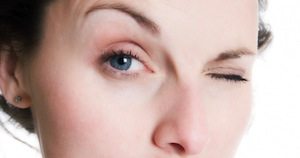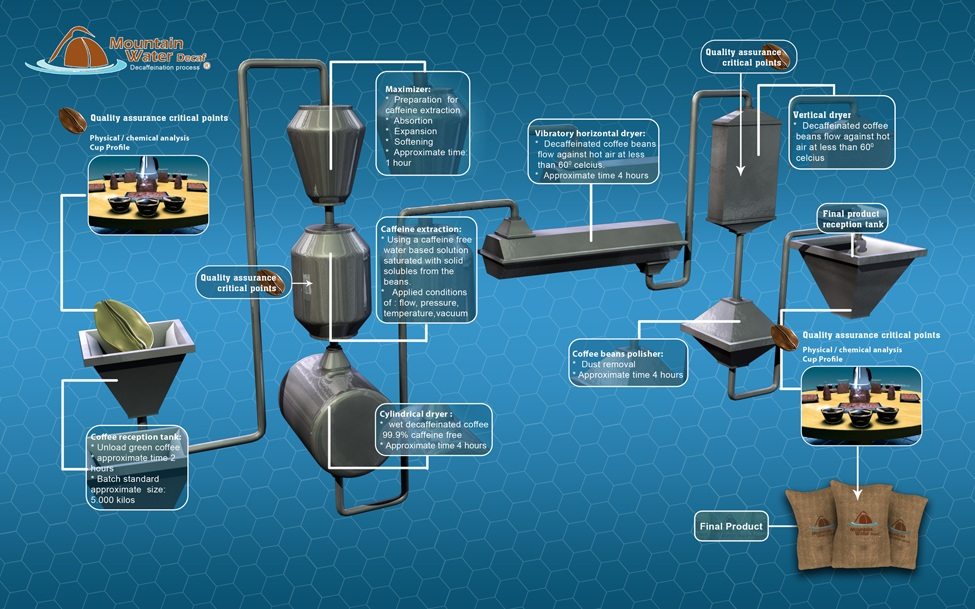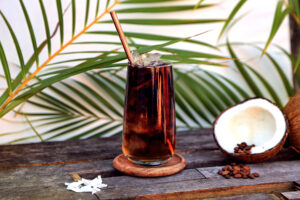If you visit the social media pages on specialty coffee on a regular basis, you may be familiar with the phrases “Death before Decaf”. These phrases are mostly accompanied by a photo of a diehard espresso drinker who has the text inked into the skin of their bicep.

Or you may have seen the hipster barista at you local coffee shop pull up an eyebrow when asked for a decaf. This is the drink that is also referred to as “the why bother”.

So we can conclude decaf is uncool, a coffee that is missing its most vital ingredient, CAFFEINE. It’s obviously something the drinker should be a little ashamed of. People rather die than drink decaf right? Wrong!
Whether you like it or not, we are currently witnessing a serious increase in decaf consumption. It is a trend that started not too long ago, possibly due to intolerance of caffeine in general, health reasons, pregnancy or people trying to limit their intake during the later hours of the day to not disrupt sleeping patterns. Some coffee lovers still want to enjoy the taste of their favourite beverage, so decaf is on the rise.
As there are many opinions about the good and bad of decaf, there seems to be equal amounts of confusion about the health benefits and the way it’s processed.
LET’S SEE IF WE CAN DEBUNK SOME MYTHS
There is no caffeine in decaf:
There are a couple of different standards worldwide with the US guidelines stating that coffee needs to be 97.5% caffeine free before it can bare the label decaf. The standard in Europe sits at 99.9%, so on and so forth.
Decaf contains harsh and/or harmful chemicals:
The decaffeination process has come a long way over the years. You can now enjoy the benefits of the Swiss Water and Mt Water Processed Decaf that gets rid of 99.9% of the caffeine and is certified organic. A lot of people still refer to the Roselius Process. Roselius’ method used benzene, which is a cancer causing chemical and therefore no longer commonly used. If you want to find a really great decaf using the Mt Water Process, click here. Here’s a flow chart of how the Mt Water Decaffeination Process works.

Decaf tastes bad:
When decaf was first developed, the process was harsh and stripped away a lot of the preferred flavours and aroma. The process these days is a lot more refined and we can preserve the delicate tastes in a bean all through the decaffeination and the roasting process. Decaffeinated beans go stale like other caffeinated coffee, and we see a lot of problems with cafes over-ordering decaf and letting it sit too long on their shelves. Rumour has it there are some cafes on the Coast that think it’s acceptable just using the last part of the shot to make an espresso coffee “decaf”. This results in a poorly extracted shot and a coffee with just below caffeine levels, but nothing close to decaf.
Decaffeination takes away all the health benefits of the coffee:
Most of the health benefits from coffee come from the antioxidants part of the polyphenols contained within the coffee. The level of caffeine within the coffee doesn’t make a difference to that, neither does the decaffeination process.
So do yourself a favour. Come on in to our James Street, Burleigh Heads, café where we serve a beautiful Mt Water Process organic decaffeinated coffee made with organic Barambah milk (or non dairy option) and have happy baristas that love making it fresh.
You can sit back and enjoy a coffee at any time of the day.


